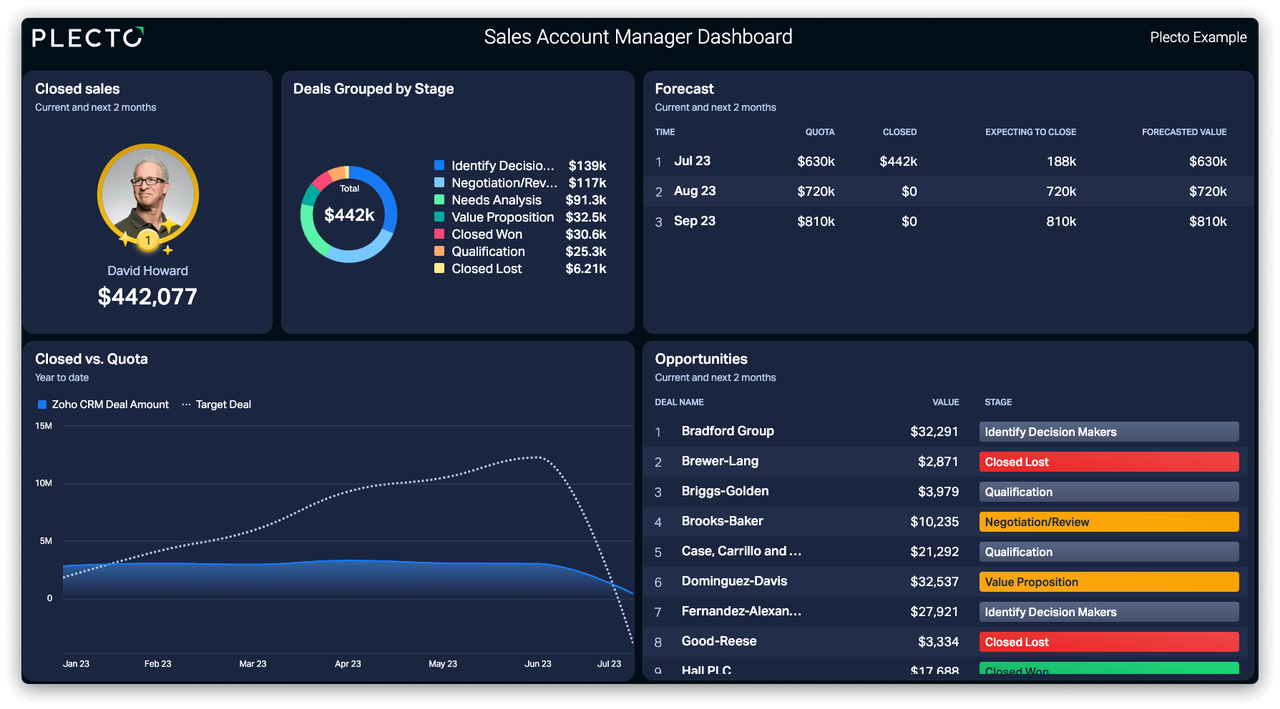Great account management is the lifeblood of most companies. Companies that excel at account management can increase revenue, net promoter scores, profitability, and more. Choosing the right account manager KPI mix can help companies see what they’re doing right – and where they might be going wrong.
This article outlines five crucial customer retention metric examples for account manager KPI tracking. They’re a great place to start if you’d like to become more data-driven in how your company approaches account management.
5 Important Customer Retention Metric Examples
This combination of five account manager KPI examples is the perfect starting point for becoming more data-driven in how your company approaches its account management operations.
1. Customer Lifetime Value (CLV)
Customer lifetime value measures the total amount of revenue a customer (or account) generates during their business relationship with the company. This is an important account manager KPI because it can help key account managers identify the personas and key customer attributes that are most likely to generate the highest LTVs. Big accounts with a higher lifetime value result in lower operational costs and higher profits.
Use this formula to calculate it: customer’s average spend per transaction x number of transactions per year x length of business relationship = CLV
Identifying the “big fish” can also help with customer retention by helping account managers identify which customers to prioritize when it comes to ongoing account management.
2. Customer Satisfaction
Customer satisfaction is a crucial customer retention metric. If customers aren’t happy with your company, they’ll stop doing business with you sooner or later. Therefore, it’s imperative to keep a finger on the pulse of how satisfied your customers are with the service and products you provide. Some companies turn to net promoter scores, but customer satisfaction score (CSAT) is a great place to start. CSAT is measured on one question, for example: On a scale of 1–5 how satisfied are you with our company’s products and services?
3. Employee Satisfaction
Dissatisfied account managers can have a trickle-down effect, which can increase customer churn. Happy, satisfied account managers are a key ingredient to successful account management. Keeping your account managers engaged will make them feel more invested in their work, which translates into stronger customer relationships. Regularly measuring employee satisfaction via surveys or during one-on-one coaching sessions will help you identify potential issues and address them before your business suffers.
4. Churn Rate
Despite the best intentions, customer attrition is a fact of life for every company. Churn rate measures the rate at which customers stop doing business with your company. For most companies, an annual churn rate of 5–7% is acceptable. If your churn rate is more than that, it’s time to look into why customers are leaving.
Use this formula to calculate it: number of customers lost during a specific timeframe ÷ number of customers at the beginning of the same timeframe = churn rate
Measuring churn rate once or twice a year is usually enough for small companies. However, companies with hundreds or thousands of customers should track their churn rate monthly to identify negative trends before they do irreversible damage. If customers are leaving in droves, you risk negative word of mouth, which can have lasting effects.
Build your first dashboard.
Start your 14-day free trial today
5. Organic Growth
Retaining existing customers is more cost-effective than recruiting new ones – and your existing customers are a fantastic resource for growing your business. Satisfied customers are more likely to give you repeat business and recommend your company to others. Account managers are an integral part of organic growth because they’re largely responsible for ensuring that your products are a good fit for your customers’ needs and that they’re delivering what customers expect. Organic growth via upsells, repeat business, and referral sales are strong indicators of how well your account managers are doing their jobs.
Automated Reporting for Account Manager KPI Tracking
Tracking these five KPIs will give you a strong start toward a more data-driven approach to account management, and having the right tools can make all the difference. With Plecto, you can schedule and generate automatic reports with custom KPIs that use real-time data to help you understand how well your account managers are serving their customers.
Improve your company’s account management today with a free 14-day trial of Plecto!




